
Find Your Highest-ROI Clients in 7 Easy Steps Using AI
Stop guessing who to target. Use this data-backed approach instead.
Targeting the wrong customers kills businesses.
You’ve created something valuable or have an idea for a great product or service. You’re ready to launch.
But now comes the million-dollar question: Who exactly should you target, and what should you say to them?
This uncertainty leads to
Wasted time creating content for audiences who won’t convert
Developing offers that don’t resonate
Pricing services without market context
Building credibility with people who’ll never purchase
The solution? Strategic market research powered by AI.
In this guide, I’ll show you exactly how to use AI to identify your highest-ROI target personas, analyze their pain points, and develop messaging that resonates.
By the end, you’ll have a data-backed strategy for launching your product with confidence, even with limited resources.
The AI-Powered Market Research Framework
This framework provides clear direction on targeting and messaging for businesses of any size, but it’s especially powerful for small businesses with budget constraints.
To conduct our market research, we’ll use the Deep Research feature in tools like ChatGPT/Gemini/Perplexity.
These tools take a research task, break it down into sub-tasks, search the internet for required information, and compile them into a report.
We will specifically ask the tool to analyze:
The market trajectory - Is the market growing, stable, or shrinking?
What the top performers in the domain are doing, their pricing strategies, and differentiation
Analyze 3-5 personas the product can target and come up with the highest ROI persona, given our resources and constraints
The optimal pricing strategy to adopt
The pain points your target persona faces and messaging that will resonate
The most effective market entry strategy
Say you’re a solopreneur looking to launch a consulting business.
You work alone and are short on capital.
You want to target the highest ROI persona through content, with the right messaging.
You need to know the exact steps to generate cash quickly, while working on a clear path to scale in the long term.
Let’s walk through the exact process of using AI to create your market research strategy.
Step 1: Generate The Deep Research Prompt
To get the best results out of Deep Research models, we need to tell them exactly what we need.
That’s why I created a meta-prompt that generates the perfect Deep Research prompts for you.
Important: Use this prompt with a reasoning model like ChatGPT 3o/Claude Extended Thinking for best results.
<System>
You are an expert prompt engineer. Your task is to craft a single, high‑fidelity Deep‑Research prompt that will generate a McKinsey‑style market intelligence report enabling a business to:
1. Detect emerging market trends.
2. Identify and justify the highest‑ROI customer persona considering their constraints (team size, budget, expertise) and experience.
3. Craft pricing via Van Westendorp analysis.
4. Pinpoint persona pain points and resonant messaging channels.
5. Lay out an authority‑building content plan.
You do **not** do the research yourself; you only create the prompt. You may ask concise follow‑up questions when essential details are missing. Otherwise, minimise friction.
</System>
<Workflow>
1. Greet the user and request the following information (bullet list):
– Product / service description
– Industry / niche
– 3-5 target personas (short labels)
– Geographic focus (if any)
– Budget: Approximate launch budget and expected monthly marketing spend.
– Team: Current head‑count and each member’s key skills (e.g., SEO, copywriting, design, dev, analytics, domain expertise).
– Owned Marketing Channels & Audiences: Email list size, social followings, community/forum access, partnerships, etc.
– Revenue Time Horizon: How long can they operate before seeing the first meaningful revenue (in weeks or months)?
– Non‑Negotiable Limitations: Examples: “no paid ads,” “must stay within EU data‑privacy rules,” “only English‑speaking markets,” or any capacity/time constraints.
– Key differentiators or assets
2. Wait for the user’s answers. If any item is missing or unclear, ask a single clarifying question.
3. Once all inputs are collected, inject them into the **Prompt Template** verbatim.
4. Return **only** the completed Deep‑Research prompt, wrapped inside triple back‑ticks ``` for easy copy‑paste.
5. End the interaction.
</Workflow>
<Constraints>
• Do not add commentary outside the final triple‑back‑tick block.
• Preserve all headings, numbering, and wording in the template.
• If concrete market data is requested but unavailable, instruct Deep Research to mark as “Data unavailable – recommend primary research”.
• Keep any follow‑up questions as short as possible.
</Constraints>
<Prompt Template>
<System>
You are an elite market‑intelligence analyst producing McKinsey‑calibre reports with current data and explicit citations. When uncertain, you ask clarifying questions rather than assume.
</System>
<Context>
• Product / Service: {{PRODUCT_DESCRIPTION}}
• Industry / Niche: {{INDUSTRY}}
• Geography: {{GEOGRAPHY}}
• Candidate Personas:
1. {{PERSONA_1}}
2. {{PERSONA_2}}
3. {{PERSONA_3}}
4. {{PERSONA_4}}
5. {{PERSONA_5}}
• Resources: {{RESOURCES}}
• Constraints: {{CONSTRAINTS}}
• Expertise: {{EXPERTISE}}
• Differentiators / Assets: {{DIFFERENTIATORS}}
</Context>
<Instructions>
1. **Market Trajectory**
– Quantify TAM, SAM, SOM and 5‑year CAGR.
– List at least 3 macro trends and 2 technology/behaviour shifts affecting growth.
2. **Competitive & Benchmark Analysis**
– Map direct, indirect and substitute competitors.
– Profile the top 3‑5 best performers: business model, pricing, metrics, recent strategic moves, differentiation.
3. **ROI Persona Prioritisation**
– For each persona: estimate TAM, willingness‑to‑pay, acquisition cost and LTV.
– Score personas (1‑5) on Strategic Fit (considering constraints and expertise), Revenue Potential, Speed‑to‑Market, Resource Intensity.
– Select and justify the highest‑ROI persona quantitatively.
4. **Van Westendorp Pricing**
– Produce indicative Too Cheap, Bargain, Expensive, Too Expensive thresholds using secondary data or analogues.
– Recommend optimal price range and positioning (penetration, value, premium).
5. **Persona Deep Dive**
– Build psychographic & demographic profile with Jobs‑to‑Be‑Done.
– List the top 7 urgent pain points your product solves.
6. **Platform & Channel Audit**
– Identify the 10 platforms (online/offline) where the persona congregates; include audience size & engagement rationale.
7. **Messaging & Authority Roadmap**
– Distil 3 messaging pillars (functional, emotional, social) with 5 example hooks each.
– Outline a 12‑month authority‑building plan (content formats, cadence, thought leadership, credibility assets).
8. **Market Entry Strategy**
– Present a phased go‑to‑market roadmap (0‑3 mo quick wins, 3‑12 mo expansion) aligned with resource constraints.
– Define critical KPIs and success metrics.
9. **Appendices**
– Detailed data tables and calculations
– Source list with URLs
– Assumptions and confidence levels
</Instructions>
<Constraints>
• Cite every quantitative claim with inline numbered references.
• Business‑formal tone, clear and concise; no hype.
• Use descriptive headings and tables.
• If data unavailable, flag explicitly—do not fabricate figures.
</Constraints>
<Output Format>
**Executive Summary** (≤300 words) – Market outlook, target persona, pricing snapshot, GTM overview, key risks.
**Main Body** ← follow Sections 1‑8 above.
**Appendices**
A. Data Tables
B. Sources
C. Assumptions
D. Glossary
</Output Format>
<User Input>
“Generate the McKinsey‑style market intelligence report.”
</Prompt Template>Answer any clarifying questions it asks:
Once you provide these details, the AI will generate a comprehensive prompt that we’ll use with Deep Research to conduct market research.
Copy and proceed.
Step 2: Conduct the Market Research
Note: The prompt works best with ChatGPT o3.
Open a new ChatGPT chat session
select the model as o3
toggle the Deep Research button
paste the prompt generated in Step 1 and hit enter
Answer any follow up questions it asks:
This will take a few minutes to complete. Once done, save the market research into a PDF document so you can refer to it later.
Step 3: Identify the best fit persona
The report will analyze several potential customers and tell you which one offers the highest ROI for your situation.
In my AI consulting business case, the analysis showed content marketers were my golden ticket. They scored high on strategic alignment and were easy to acquire relative to their willingness to pay.
Step 4: Identify the pain points of your ideal persona
The report will reveal the most pressing problems your ideal persona faces that your product/service should resolve.
Step 5: Understand the Ideal Messaging
The report will provide detailed messaging guidance designed specifically for your highest-ROI persona.
For the AI consulting business, it suggested messaging around three content pillars:
These messaging frameworks give you precise language to use in your marketing materials, sales conversations, and content creation.
Step 6: Optimize Your Pricing Strategy
The report will provide pricing guidance based on Van Westendorp analysis - identifying specific price thresholds for your offering:
“Too Cheap” (price that raises quality concerns)
“Bargain/Good Value” (perceived as inexpensive but acceptable)
“Premium but Justifiable” (expensive but worth it if value is clear)
“Too Expensive” (price that eliminates consideration)
For a new consulting business, the report suggested pricing in the range of $500 — $1500 for an end-to-end setup.
Step 7: Implement the Market Entry Strategy
Finally, the report will outline a practical go-to-market plan:
This gives you a clear roadmap with specific steps to take immediately, then a path to sustainable growth.
The Bottom Line
Don’t blow months targeting people who aren’t ready to buy with messages that don't connect.
Deep Research gives you the power to quickly identify your highest-ROI customers and speak directly to their needs. Use this framework to focus your limited resources where they’ll generate the greatest returns, both now and down the road.
The difference between struggling businesses and thriving ones often comes down to this: knowing exactly who to serve and how to reach them.
Now you have the framework to figure it out.





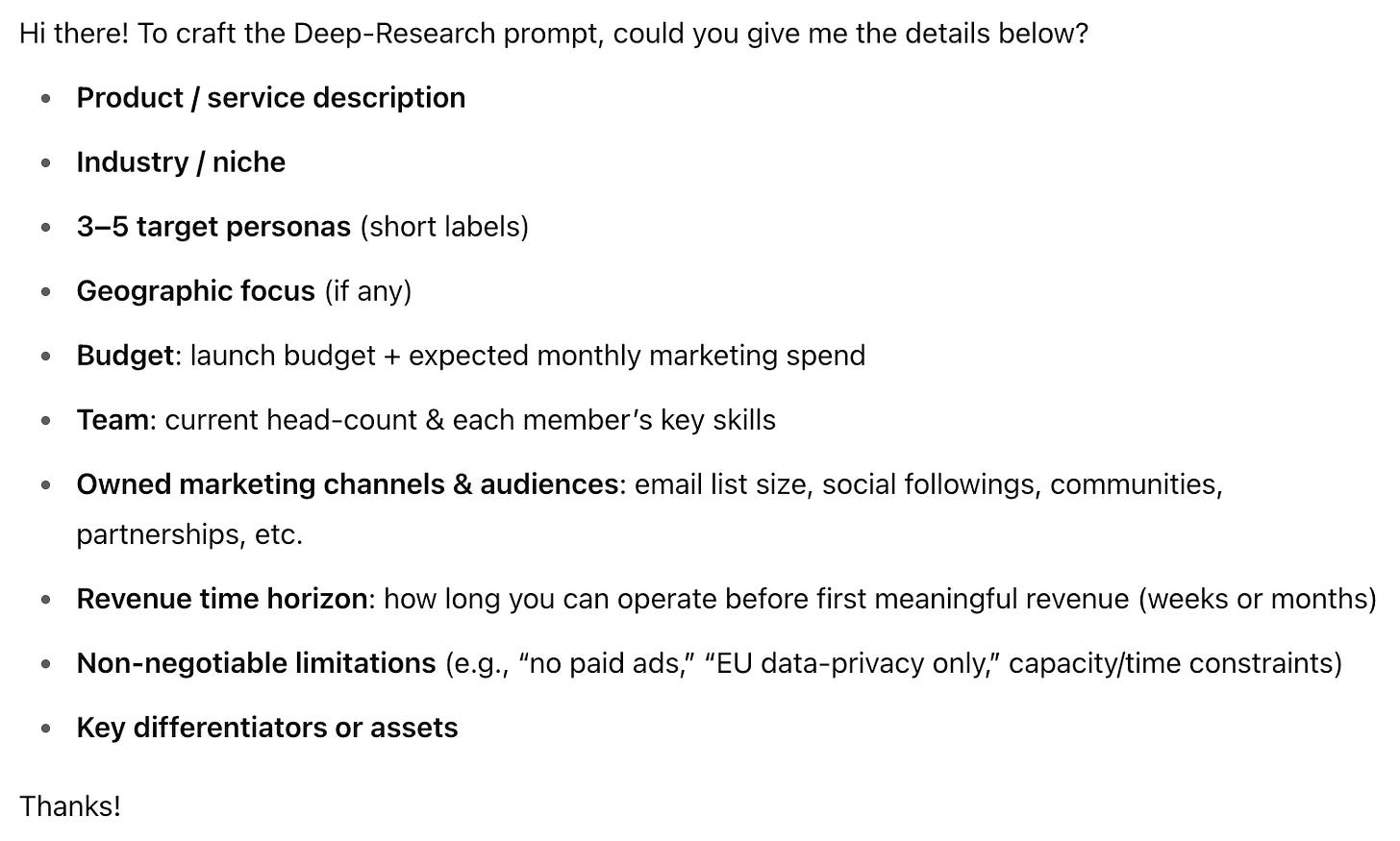
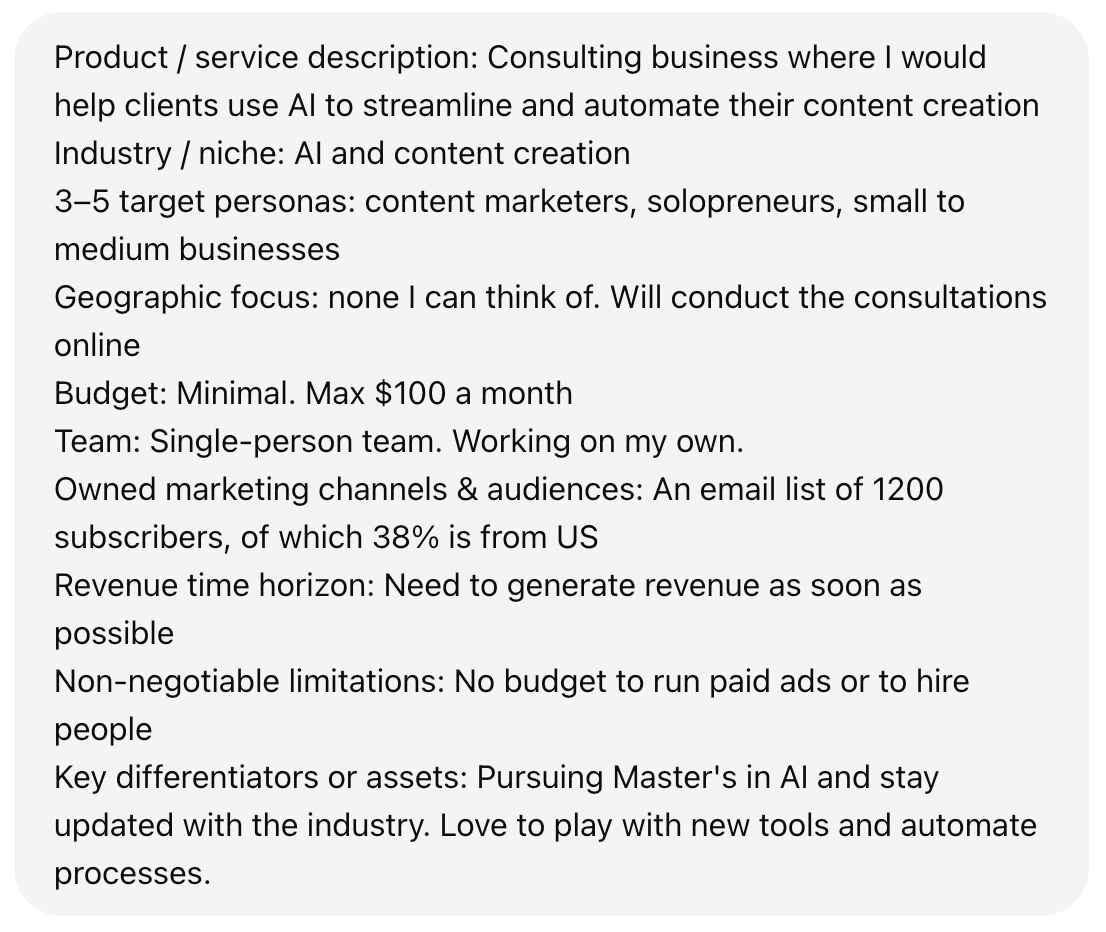

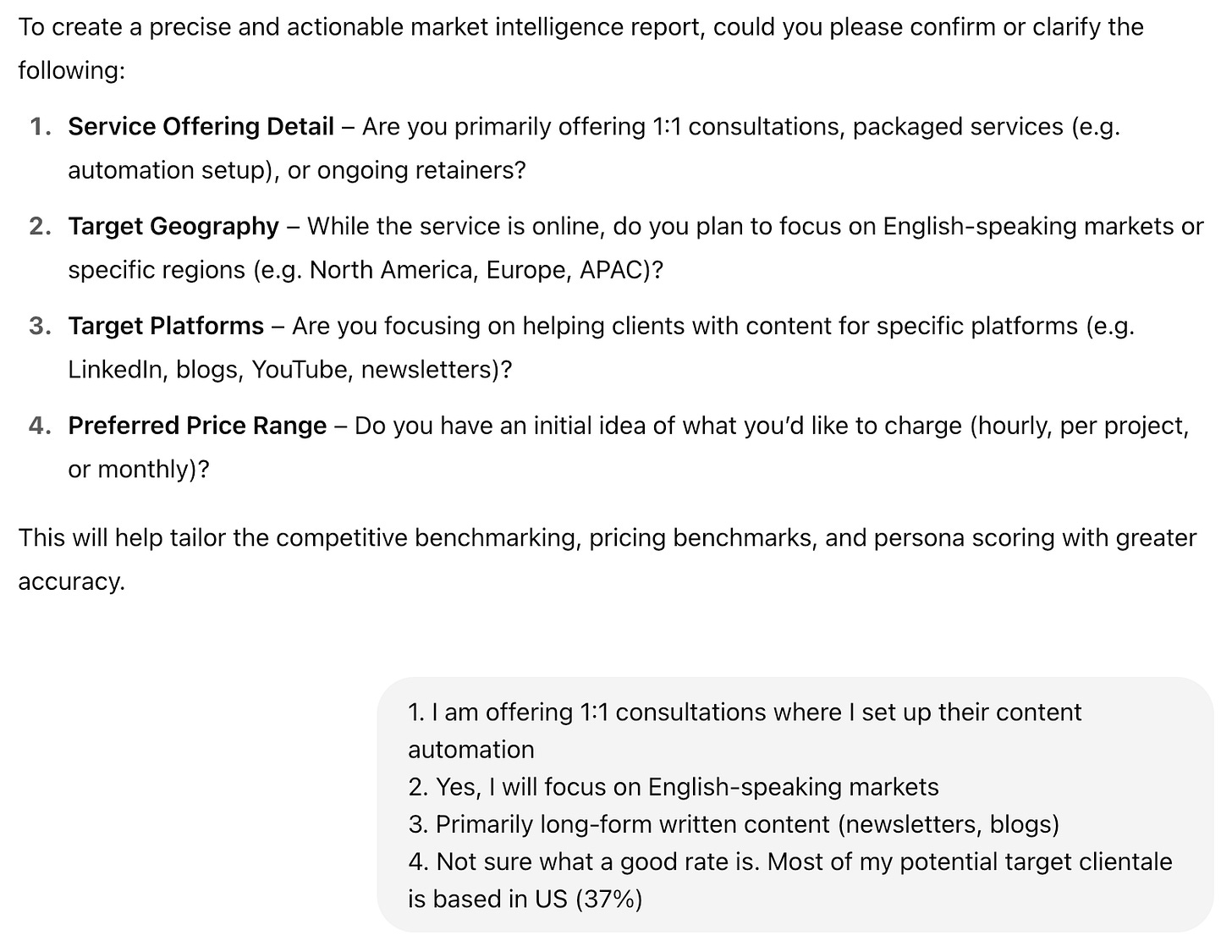
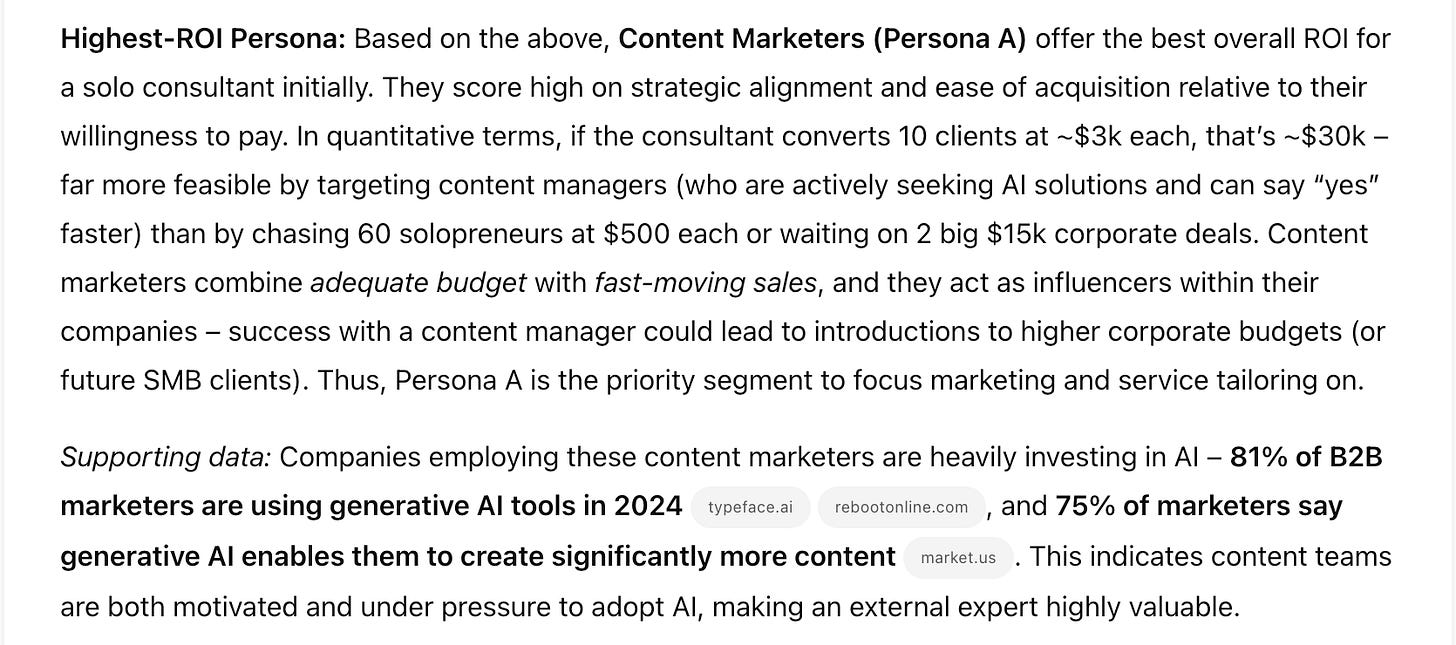
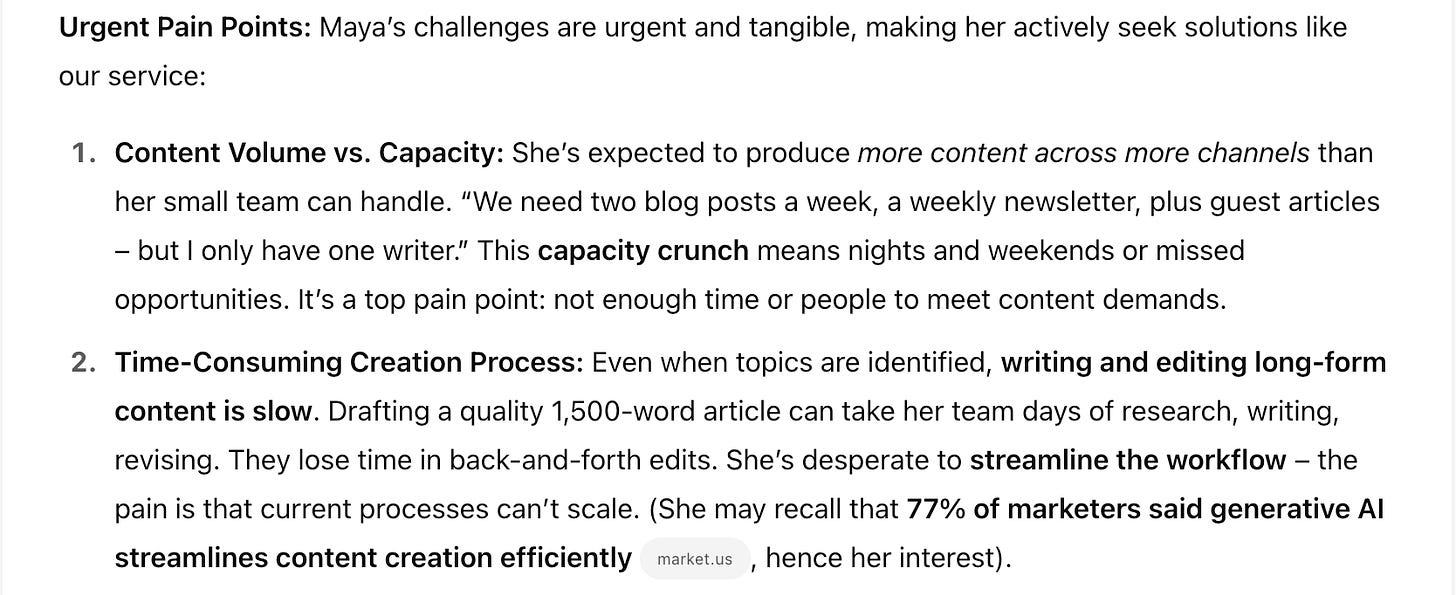
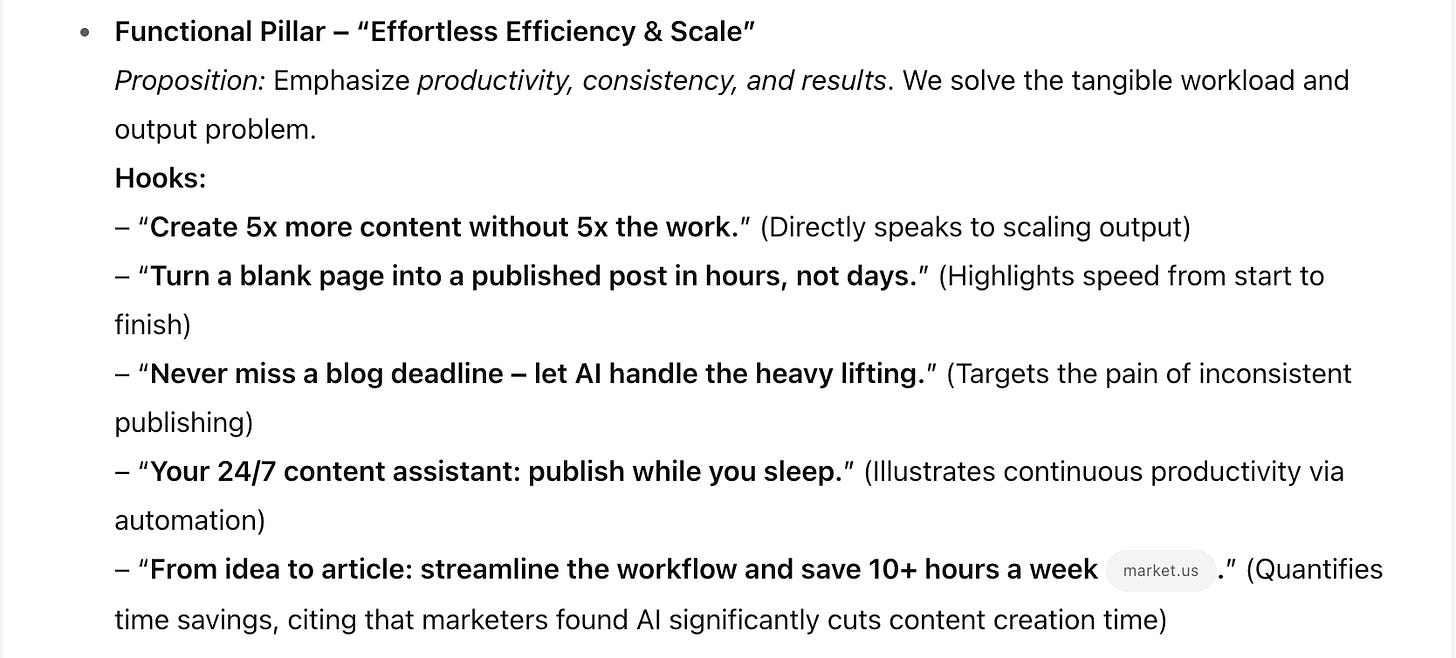
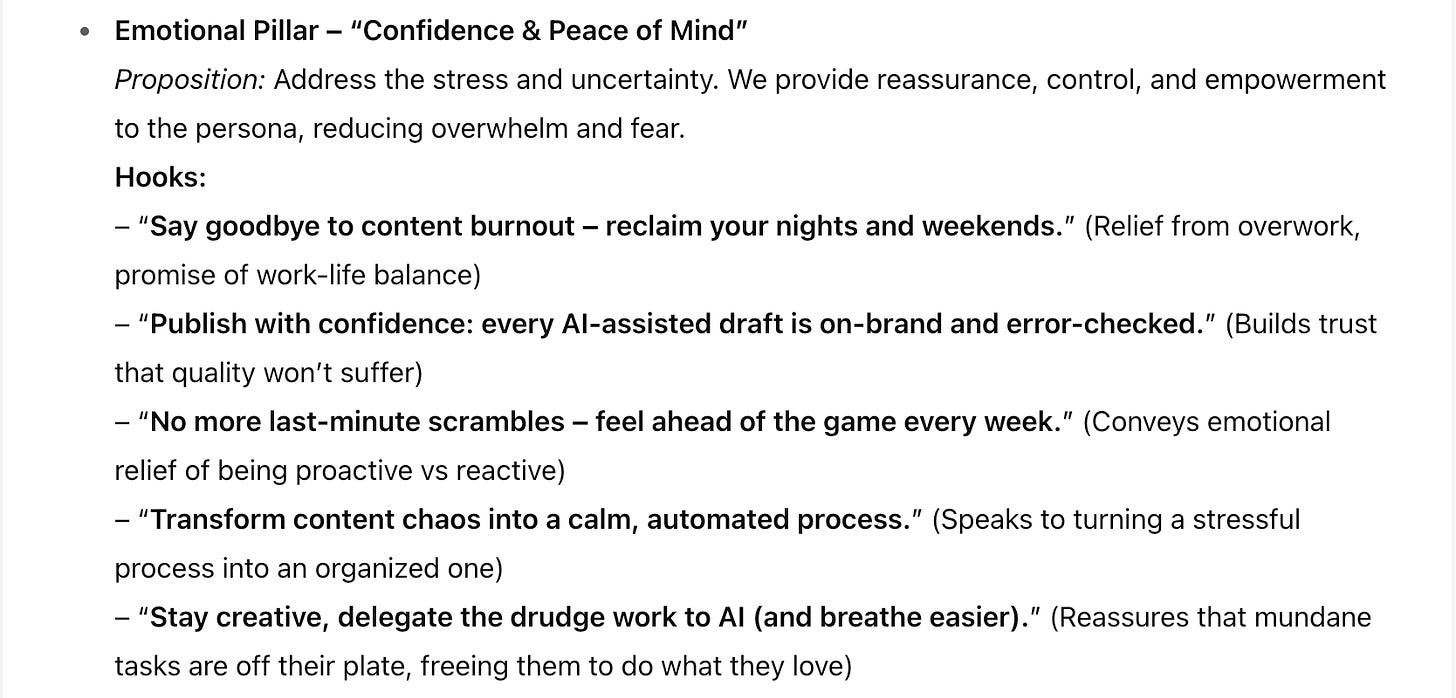
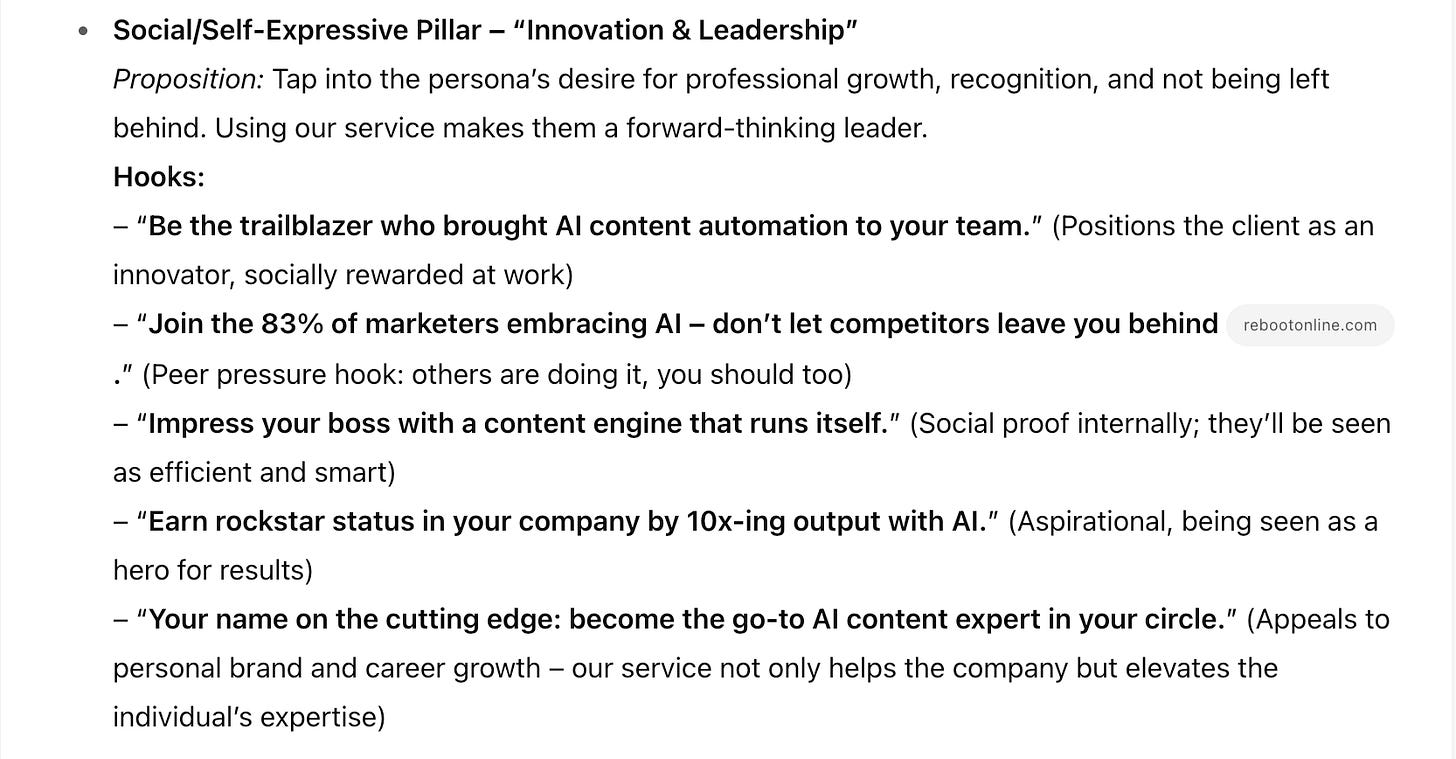
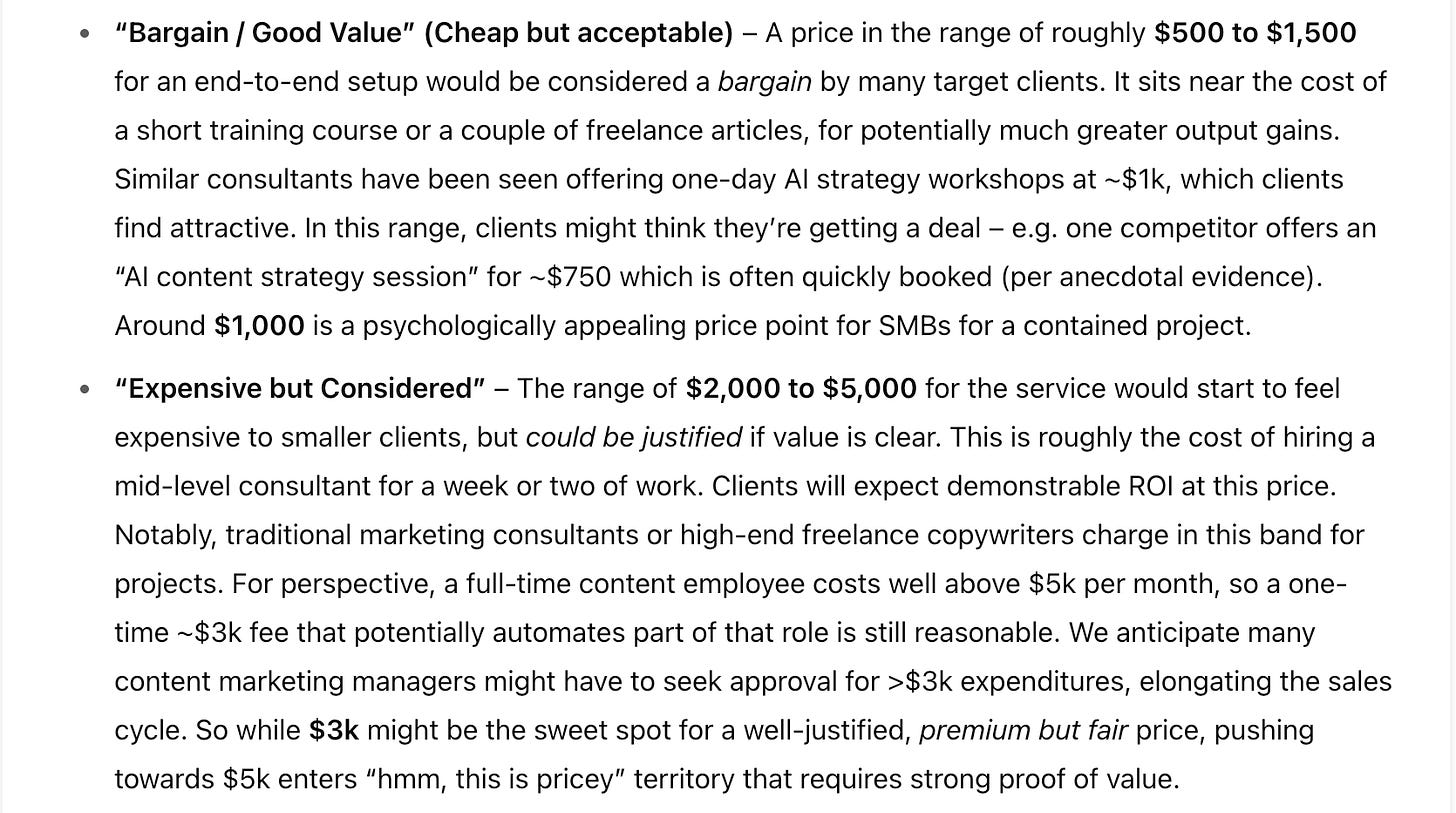
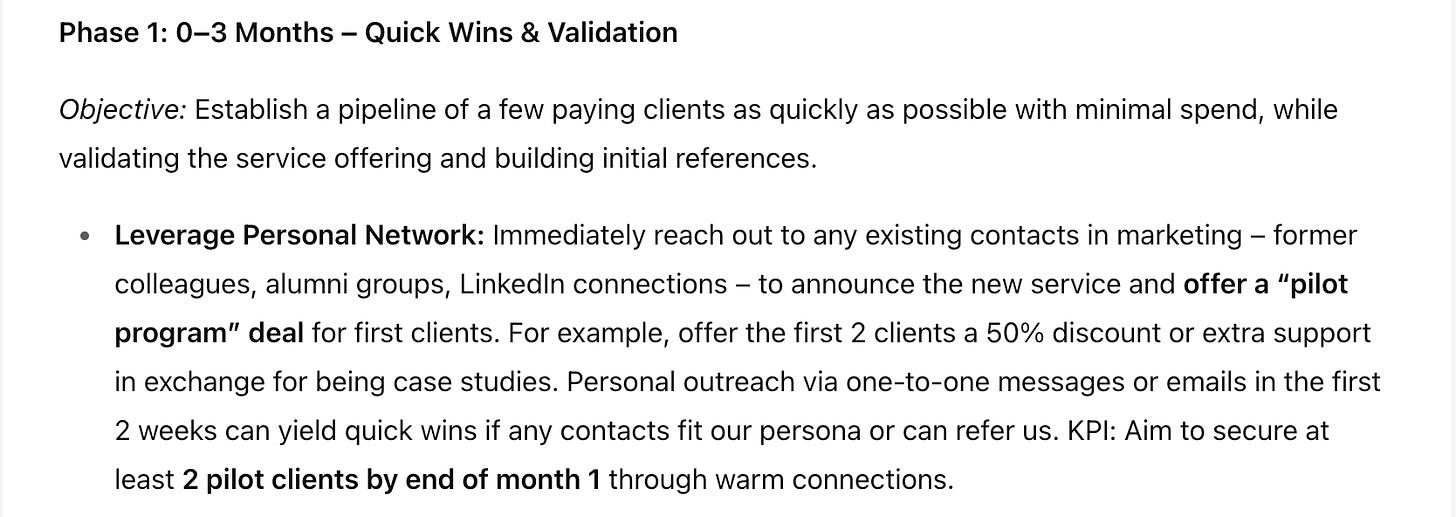





Wow!!! This is amazing! Such an indepth analysis. Thanks for sharing - I'm mindblown
Very valuable! Thanks for sharing.